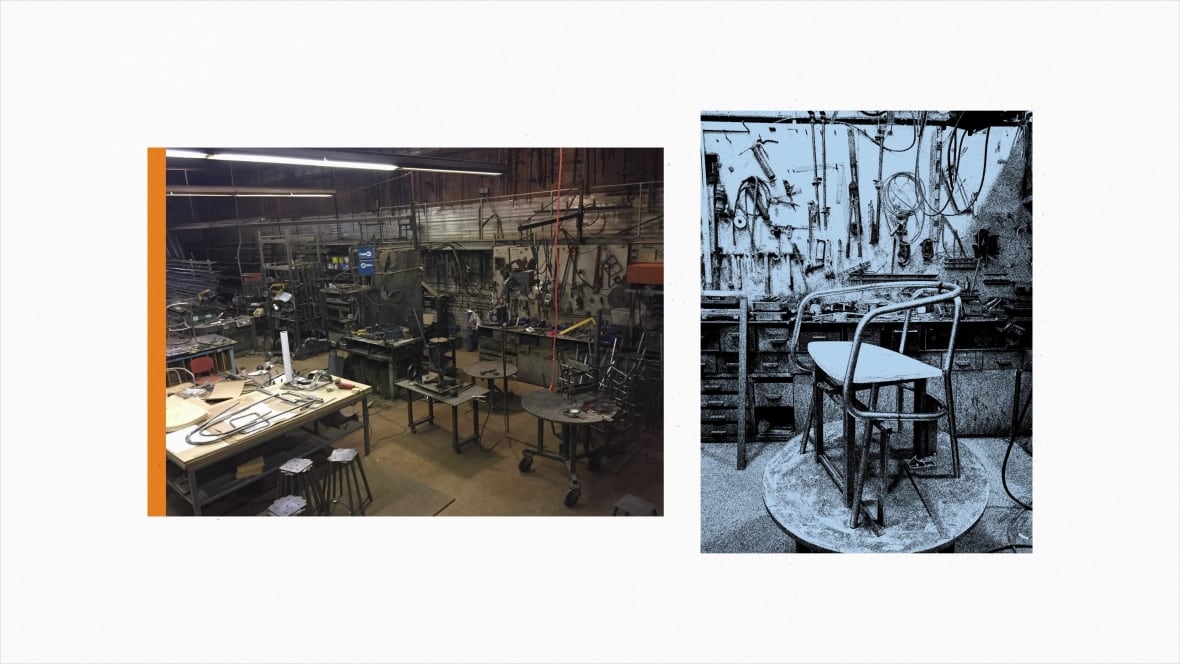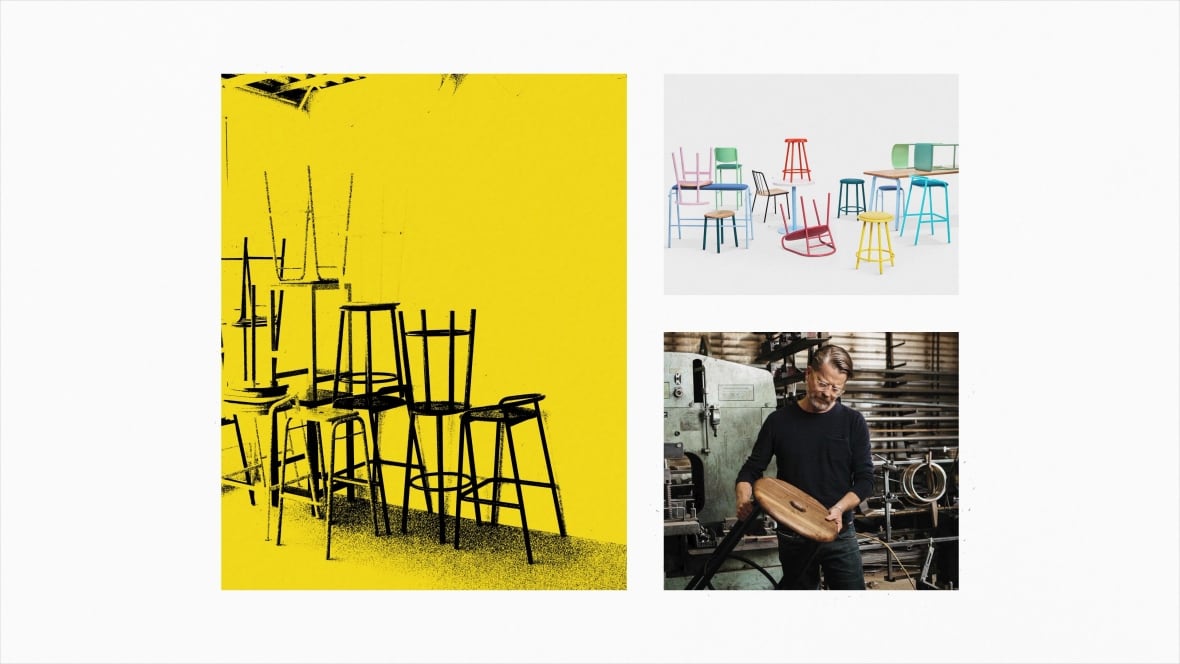Easy to manufacture, hard to destroy: how to design the perfect chair
CBC On Design explores the evolution of an idea and the path it takes to becoming an object in the world
A chair in a restaurant needs to do a lot of things. It has to fit everyone that sits in it, survive daily wear and tear and look good doing it. It needs to match the restaurant's style and still be affordable enough to buy in bulk.
Comfort, durability, style, scalability are some of the pillars of industrial design. Industrial Designer Geof Lilge, featured in this episode of CBC On Design, now streaming on CBC Gem and YouTube, has spent decades tackling these challenges. From crafting handmade pieces to designing for large scale production, his chairs have made their way into cafes, restaurants, and offices around the world — as well as appearances in media like getting thrown through a window by Will Smith in I, Robot.

To stand up in these environments, durability is at the core of Lilge's approach to his work.
"It's just the amount of use, the hours of use that a stool or chair will get," he says. "People rock back and forth on the stool, they really test the durability. You have to build bomb-proof metal furniture."
For this type of seating Lilge and his company Division Twelve use a tube steel frame structure to enable the chair to ideally last decades. "A wood chair in this format with minimal structure to it would be very challenged in a commercial space."

With his own manufacturing space, built out an old metal chair factory that was closed after a fire, Lilge is able to quickly bring things from concept to a reality that you can sit on.
"When I set out to design this collection I put a ton of ideas on paper," he says. "But when I had the shop I could basically go into the workshop, cut my metal, weld up a quick mockup full scale in half a day. And I was able to sit on it, I was able to turn it around, see how it looks from all angles. One rule I've always found is if it's easy to prototype a design, it's going to be easy to manufacture."
As his clients orders have got bigger, Lilge and Division Twelve partnered with Keilhauer, a Canadian-based furniture company, to manufacture their collection for even larger commercial uses.

Lilge's chairs combine the metal in flowing lines with smooth natural wood surfaces.
"I think the common thread that runs through a lot of my products is there's sort of a craft feel, a craft finish," he reflects while holding a handmade and beautifully crafted wood kitchen board his mother made in 1975. "I grew up in this crafty, hippie, anthropology style bohemian house full of stuff like this and it sunk in. I appreciate natural materials, a craft-level finish."
New series CBC On Design, now streaming on CBC Gem and YouTube, explores the evolution of an idea and the path it takes to becoming a item in your everyday life — but that journey is rarely a straight line. Between the initial concept and finished object lie sketches, prototypes, material experiments, user testing, manufacturing puzzles, and countless hidden steps.